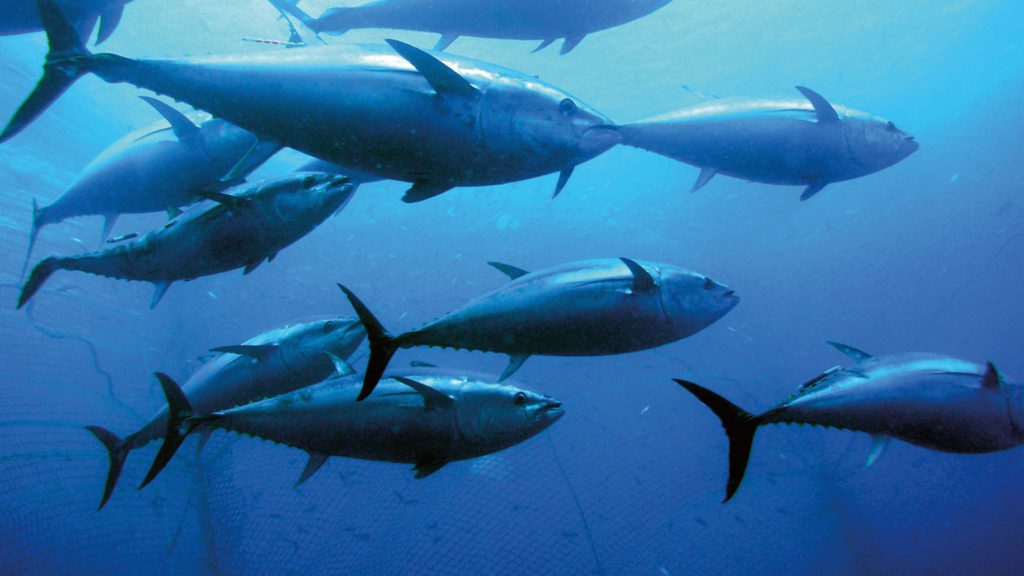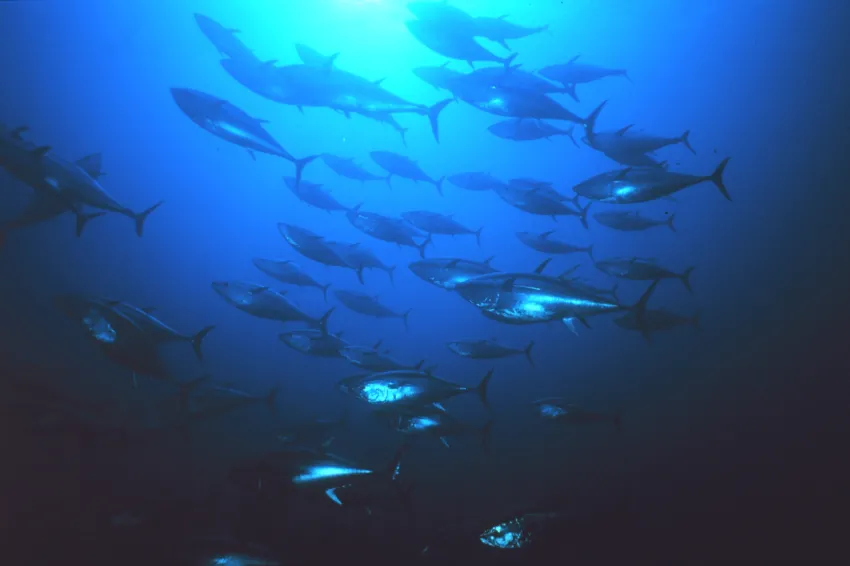Pacific bluefin tuna (Thunnus orientalisIt is one of the most famous and valuable tuna species in the world's oceans. This powerful, fast and highly organized fish is able to travel long distances, maintain its body temperature above that of the surrounding water, and plays an important role in marine ecosystems.
This species is a close relative of the Atlantic Bluefin tuna (Thunnus thynnus), but lives exclusively in the waters of the Pacific Ocean. It is one of the most popular tuna species in Japan, especially in cooking, which has led to a significant industrial catch and threatened extinction.
In this article, we look at the biology, habitat, behavior, threats, and conservation measures of this amazing ocean predator.

1. General characteristics of Pacific bluefin tuna
🔬 Scientific classification:
✔ The Kingdom: Animals (Animalia)
✔ Type: Chordal (Chordata)
✔ Class: Lucheperi pisces (Actinopterygii)
✔ Row: Perch-like (Perciformes)
✔ Family: Mackerel products (Scombridae)
✔ Gender: Tuna fish (Thunnus)
✔ View: Pacific bluefin tuna (Thunnus orientalis)
📍 Habitat range:
* Western Pacific (from Japan to the Philippines)
* Eastern Pacific (California to Chile)
* North Pacific (Alaska)
* Can migrate across the entire Pacific Ocean
📏 Sizes:
* Length: up to 3 m
* Weight: up to 450 kg
📌 Interesting!
The record copy had a weight of 411.6 kg and it was caught off the coast of Japan.
🏃 Speed:
* Up to 70 km / h
🌡 Temperature range:
* From 5°C to 27°C
2. Appearance and anatomy
🔹 Body:
✔ Streamlined, spindle-shaped-adapted for fast swimming
✔ Powerful musculature
🔹 Color scheme:
✔ Back-dark blue or dark gray
✔ Belly-silver-white
✔ Metallic sheen on the sides
🔹 Fins:
✔ Pectoral fins-small
✔ Dorsal fin-sickle-shaped
✔ Caudal fin-in the shape of a crescent moon
📌 Unique Feature:
Like Atlantic bluefin tuna, this species able to maintain body temperature above water temperaturewhich allows it to survive in cold regions.
3. Lifestyle and behavior
🛶 Migrations:
✔ Travels thousands of kilometers in search of food and spawning grounds
✔ Juveniles are raised in warm waters, while adults migrate to colder areas
📌 Interesting!
Young tuna can cross the Pacific Ocean in just 55 days!
🐟 Social structure:
✔ Young people swim in big shoals
✔ Adults can migrate alone
4. Feeding and predatory behavior
🍽 Basic diet:
✔ Sardines
✔ Anchovies
✔ Mackerel
✔ Squid
✔ Crustaceans
📌 Interesting!
Young tuna grow very fast – up to 10 kg per year!

5. reproduction and life cycle
🌊 Spawning grounds:
✔ Western Pacific
✔ Sea of Japan
🕑 Spawning time:
✔ May-July
🐟 Features of reproduction:
✔ A single female can lay up to 10 million eggs
Larvae grow quickly and become predators in the first year of life
📌 Interesting!
Pacific bluefin tuna can live up to 25 years old!
6. industrial catch and threats
📉 Population decline:
✔ Due to overfishing, the population has been reduced by 80%
✔ Main market-Japan (sushi and sashimi)
⚖ Security measures:
✔ Catch limits
✔ Protection of spawning grounds
✔ Captive rearing programs
📌 Interesting!
One large tuna can cost more than $ 3 million at Japanese auctions!
7. Role in the marine ecosystem
🌊 Top-level Predator:
✔ Controls small fish populations
✔ Important for the health of ocean ecosystems
⚠ Consequences of population decline:
✔ Overfishing can lead to an increase in the number of small fish
✔ Changing the balance of the food chain
8. Interesting facts about Pacific Bluefin tuna
✔ One of the few fish species that can support higher body temperature
✔ Sails long distances without stopping
✔ There are special tuna farms in Japan
✔ Fastest registered tuna marathon-more than 10,000 km in search of food
Conclusion
The Pacific bluefin tuna is a powerful, fast and valuable predator that plays an important role in marine ecosystems. Its unique biology, high swimming speed and commercial value make it one of the most famous fish species in the world.
However, overfishing has put this species at risk, which requires urgent conservation measures. Thanks to international protection programs, restrictions on commercial fishing and artificial breeding, there is a chance to preserve the population of this unique predator for future generations.